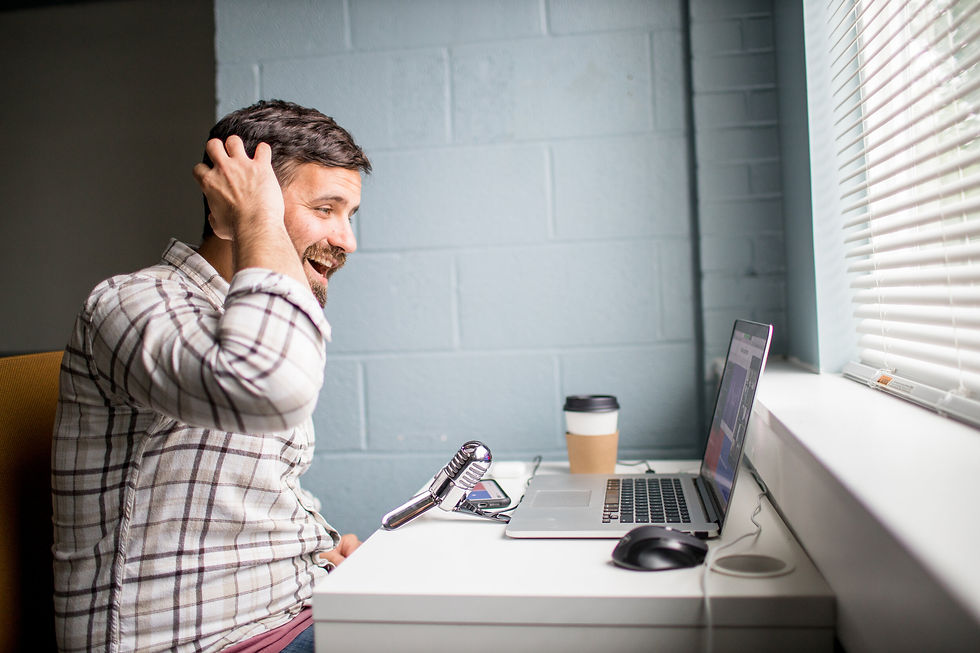People Adapt - Notes on CASE Online's Inaugural Summer
- Benjamin Reese
- Jul 11, 2020
- 3 min read
Updated: Dec 29, 2023
Notes from the Director of CASE Online Summer Learning Program, Benjamin Reese.
I’ve done summer programming for over a decade, but I’ve never done a summer program like this. I traded in water games, skits, and sports for a desk and computer. A lot had to change.

Every corner of our society is scrambling to adapt. Summer programming is no different. As kids faced long stretches of time indoors, educators tried to figure out ways to offer valuable educational content in new mediums. At such a time as this, I hope people take note of the value of the human resource. It’s people that adapt. It’s people with talent, inner resources, and creativity that make things work on the fly. I’ve been blown away by the resourcefulness of our teachers, and our partner organization, NAZA, to respond to these times and still put out a program that serves youth. In the end, I think we put on an amazing program, but it wouldn’t have been possible without amazing people.
The program we put on was called CASE Summer Learning Online. It was offered five days a week. Because of the online format, it might be a hard program to imagine. So let me try to give an overview of what a normal day would look like.

The program started at 11AM. Kids would sign onto a Zoom session, where they would be greeted, and we would do a number of small activities as we waited for other students to arrive. Riddles and visuals puzzles were a favorite, such as the BBC earth puzzle where you look for a badger in a crowd of Zebras. (Don’t try it. It’s nearly impossible!) It was also a time to ask kids about their day or what they did over the weekend.
Once everyone was settled the morning session would begin. The first activity was a “community builder” game. This was often a Kahoot! game, a kind of online quiz game, where kids compete for points and try to win. But it wasn’t always competitive. Sometimes it was a “would you rather” game, where students would have to choose between something like “would rather be able to control fire or water,” and then students would explain their answer.

After the community building game, I would explain the project for the day. Every week there was an overarching project that students were trying to work toward completing. To give an example: One week we did computer programming. Using the MIT-developed Scratch programming language (a block-based programming language), students learned how to program games.
Selecting which projects would work for this program was not easy. We had to ensure that several components were in place. First, it had to be something that every kid could participate in regardless of the tech they were using, which meant that no special software could be required. Second, they could actually produce something meaningful, something that expressed themselves and allowed for creativity, and, third, the project taught a transferable skill--that is, it actually taught something that they would find valuable later on.
Finding these types of activities was not easy, but an activity like Scratch programming checked all the boxes. All the software was browser-based, the kids could create games that were meaningful to them, and it taught an important skill, the basics of computer programming. Best of all, the kids could post their game on our classroom website and share their work with other students.

The youth would work on their project from 11AM - 2:30PM. We would be available on Zoom, ready to answer questions or troubleshoot problems that they were having with their project. At 2:30PM, we would meet back at Zoom for another session. During this time, students would get to share their work, and they would receive feedback from their teachers. The projects that the students produced were amazing. They worked hard on their own, solved problems, asked good questions, and revised their work when needed. And the results showed.
This summer has been a rollercoaster. All of us have had to adapt, but youth also need to be taught the skills to learn and adapt as well. The world shows no signs of slowing down. Getting kids to spend their time learning new skills, solving problems, and working together helped them develop the skills they’ll need in this ever-changing world.
C.A.S.E. is a program of the Nashville After Zone Alliance. The Nashville After Zone Alliance is a network of coordinated after school programming for Metro’s middle-school students. NAZA is a partnership among the Nashville Public Library, MNPS, and other existing youth-serving groups. It is modeled on successful efforts in other cities and is organized around geographically-defined zones.

Kommentit